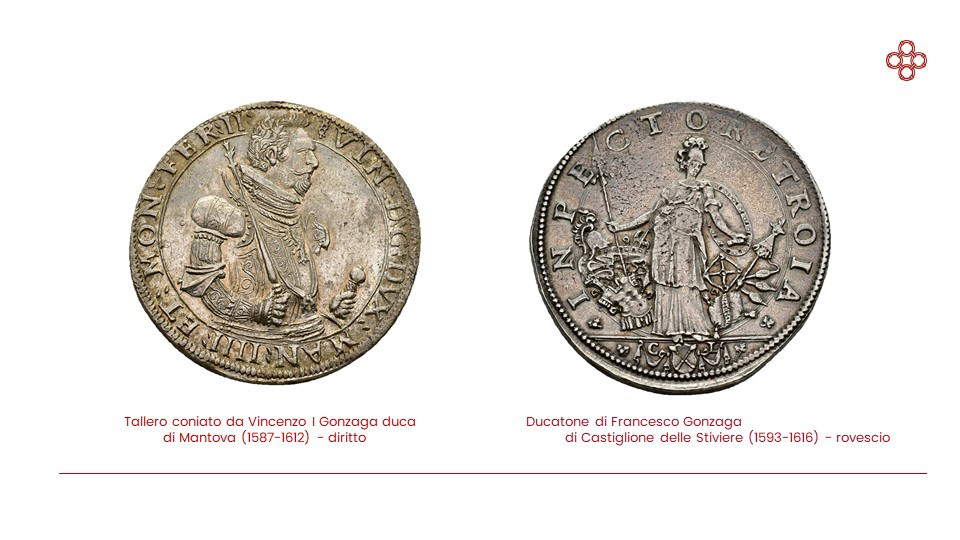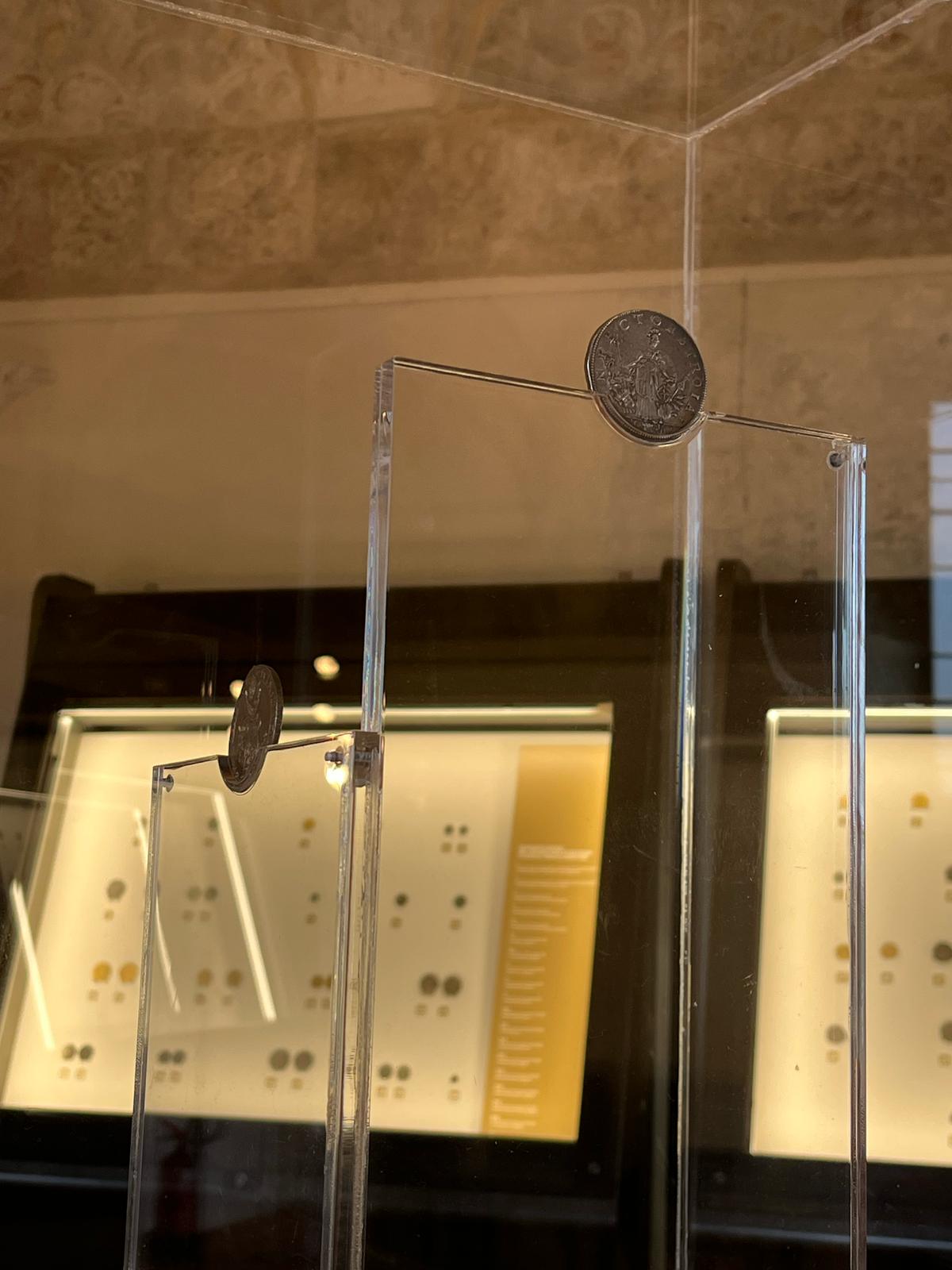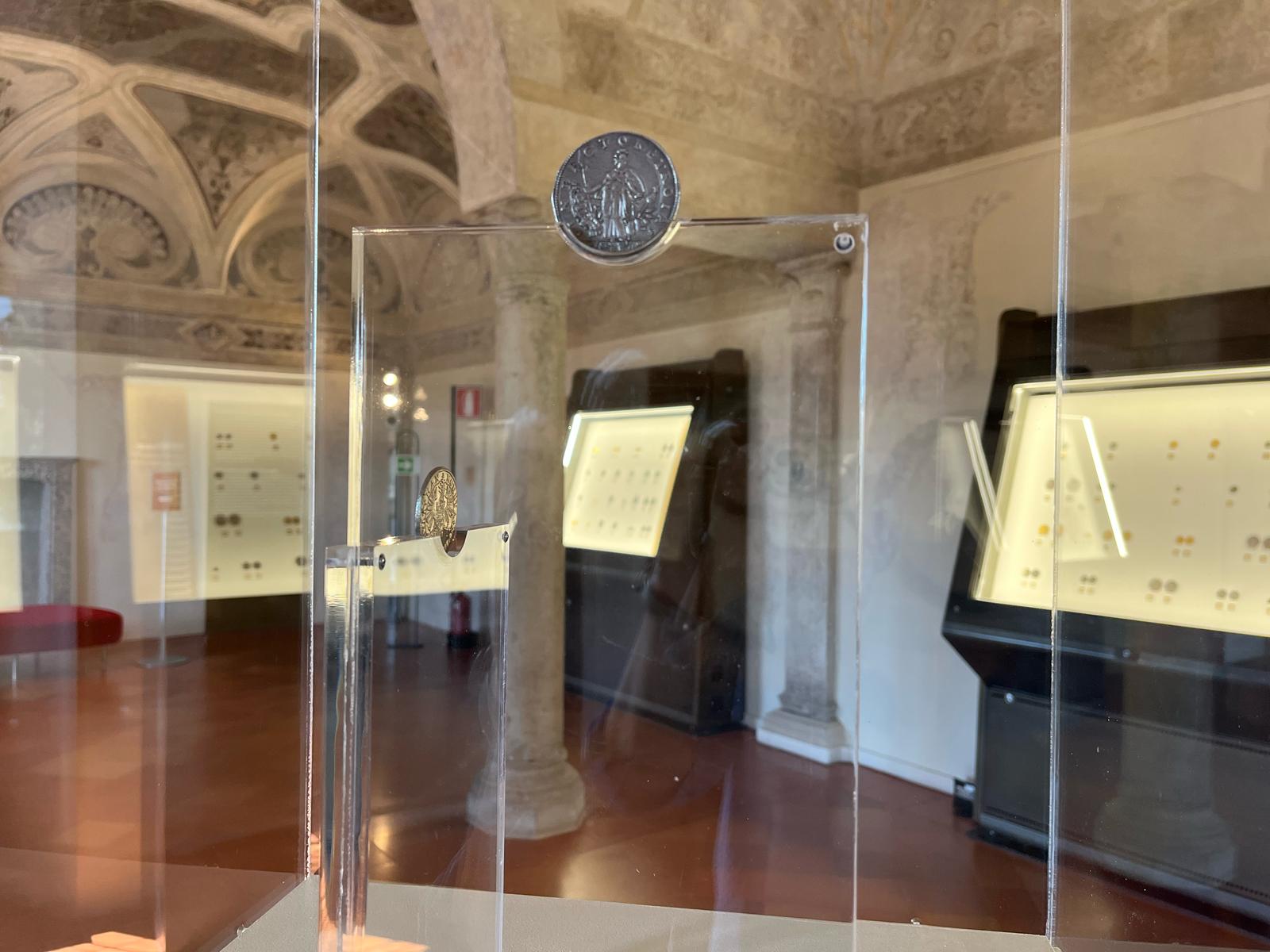Two silver coins dating from theGonzaga era, of extreme rarity and in exceptional condition, have been loaned to the Ducal Palace in Mantua by a private collector. The agreement, signed in the form of a five-year free loan, allows the Mantuan museum to fill some gaps in its already rich numismatic collection. The two coins are on display starting Saturday, May 3, 2025 inside the Rustica apartment, in the Hall of the Four Columns, one of the most collected and musealized rooms of the visitable itinerary.
The display includes a presentation that allows simultaneous observation of the obverse and reverse of each coin, thus facilitating iconographic and textual analysis by visitors. The initiative complements a series of educational and informative activities related to the numismatic collection, with the intention of broadening interest in this specialized area of history and art.
In fact, the coins, which can be dated around 1600, complement the nucleus of specimens from the Alessandro Magnaguti collection, currently on deposit at the museum by Banca Monte dei Paschi di Siena, which has guaranteed their preservation and public enjoyment since last year. The two coins represent an enrichment in historical and documentary terms, completing the almost exhaustive survey of the Gonzaga coinage. In particular, they are a Thaler of Vincenzo I Gonzaga and a Ducatone of Francesco Gonzaga of Castiglione delle Stiviere, both examples of Mantuan monetary production at a crucial moment in its technical and aesthetic evolution.



The first of the two specimens is a thaler minted during the rule of Vincenzo I Gonzaga, Duke of Mantua and Duke of Monferrato. The specimen features on the obverse the profile of the duke in armor, depicted in half-length and accompanied by sword and scepter. The reverse, on the other hand, depicts an eagle with spread wings, with the Gonzaga heraldic coat of arms in the center. It is the only Gonzaga coin designed for the eastern market, and its rarity is such that only one other specimen is known, kept in Venice in the Papadopoli numismatic collection. The work of mintmaster David Gauger of Augsburg, a central figure in the modernization of minting techniques in Mantua, contributed significantly to its creation. In fact, it was Gauger who introduced the first equipment for minting at the press in the Gonzaga mint, which made possible a level of design definition never previously achieved.
The other specimen that has just come to the museum is a silver Ducatone accurately attributed to the year 1605, issued by Francesco Gonzaga, lord of Castiglione delle Stiviere. The coin, also known in only one other specimen preserved at the Münzkabinett in Vienna, bears an inscription on the reverse that has long generated misunderstanding: for years it was read as IN ECTORE TROIA, while the correct inscription is IN PECTORE TROIA. The epigraph, mythological in origin, refers to the episode in which Achilles, in order to escape war, disguised himself as a woman and hid on the island of Syrus, later being discovered by Odysseus. The allusion appears to be in line with the figure of Prince Francesco Gonzaga, who aspired to assert himself in military endeavors and not in a lifestyle marked by luxury and quietude, as was the case for other members of the nobility of the time. The decision of the Ducal Palace of Mantua to enhance its numismatic section, including through temporary loans, is part of a broader strategy of expanding and deepening the collections, which involves not only paintings, sculptures and art objects, but also documentary materials and material evidence such as coins.
The estimated value of each of the two coins may exceed 100,000 euros in the international market, where similar specimens emerge in specialized auctions. However, as stressed by the museum management, the purpose of the operation is not commercial, but scientific and cultural. The integration between the collection nuclei already present and the new loans makes it possible to further refine the reading of dynastic, political and economic events related to the Gonzaga lineage, one of the most influential in central-northern Italy between the 16th and 17th centuries.
 |
| Two extremely rare Gonzaga coins enrich the collection of the Ducal Palace in Mantua |
Warning: the translation into English of the original Italian article was created using automatic tools. We undertake to review all articles, but we do not guarantee the total absence of inaccuracies in the translation due to the program. You can find the original by clicking on the ITA button. If you find any mistake,please contact us.